I can easily create a stackview with rounded corners in iOS 14 by doing:
stackView.layer.cornerRadius = 10
stackView.clipsToBounds = true
without doing anything else. But since I want my app to also work on iPhone 6 that can't go beyond iOS 12, the above 2 lines of code don't do anything. I have looked at How can I set the cornerRadius of a UIStackView? and adapted the code to my app, but it still doesn't work. To be clear, I have:
- Changed my build settings to use a deployment target of iOS 12.3
- Excluded references to scenes and added window variable (Add iOS 12 support to a new Xcode 11 Project)
- Tested with iPhone 11 and iphone 6 simulator (both did not show rounded corners)
Here's my code:
import UIKit
class ViewController: UIViewController {
let buttonList = ["Dog", "Cat", "Mouse"]
override func viewDidLoad() {
super.viewDidLoad()
view.backgroundColor = .black
let stackView = UIStackView()
stackView.axis = .vertical
stackView.distribution = .fillEqually
stackView.alignment = .fill
stackView.spacing = 6
stackView.backgroundColor = .systemPink // this actually works
view.addSubview(stackView)
stackView.translatesAutoresizingMaskIntoConstraints = false
stackView.centerXAnchor.constraint(equalTo: view.centerXAnchor).isActive = true
stackView.centerYAnchor.constraint(equalTo: view.centerYAnchor).isActive = true
stackView.widthAnchor.constraint(equalToConstant: 140).isActive = true
// The following is "supposed" to create rounded corners for the stackview
let subView = UIView(frame: stackView.bounds)
subView.backgroundColor = .yellow // this ends up showing through instead of the systemPink
subView.autoresizingMask = [.flexibleWidth, .flexibleHeight]
stackView.insertSubview(subView, at: 0)
subView.layer.cornerRadius = 10
subView.layer.masksToBounds = true
subView.clipsToBounds = true
// Fill the stackview with buttons
for index in 0..<buttonList.count {
let button = UIButton()
button.setTitle(buttonList[index], for: .normal)
button.backgroundColor = .cyan
button.setTitleColor(.black, for: .normal)
button.titleLabel?.font = UIFont.systemFont(ofSize: 14)
stackView.addArrangedSubview(button)
}
}
}
And this is what it looks like (no rounded corners):
So what am I missing? How can I make my stackview appear to have rounded corners for iPhone 6 (iOS 12) and above?

